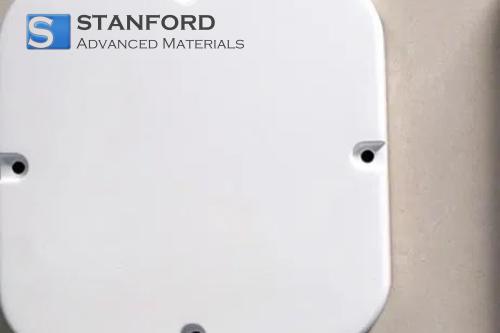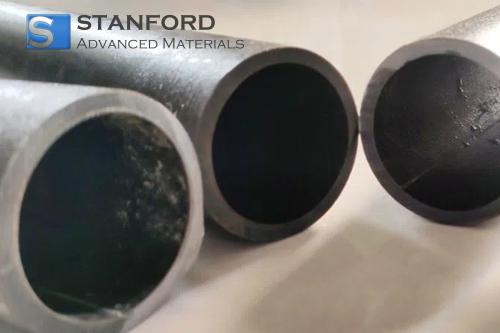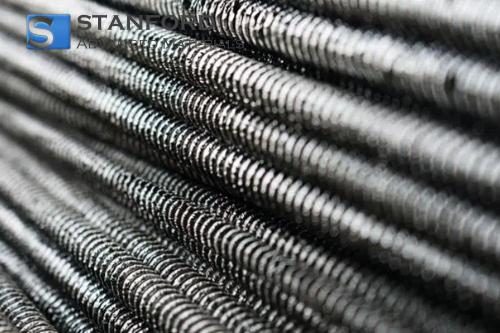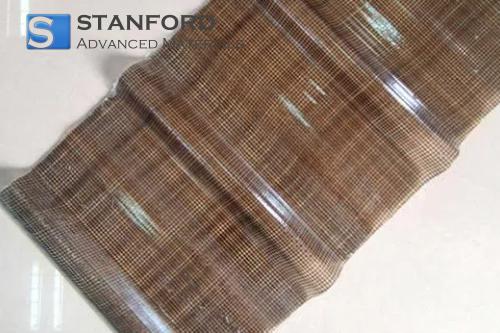How Trace Impurities And Grain Boundaries Define Nb-Based Superconductors
Description
This technical review summarises experimental investigations into the critical temperature, the electron mean free path, the current density, grain orientation and heat treatment. The findings are supported by key literature references.
Comparative Experimental Analysis of Critical Temperature, Purity and Grain Diameter in Niobium Superconductors
Numerous studies have confirmed the correlation between high-purity Niob and elevated critical temperatures (Tc). Flükiger et al. (1981) demonstrated that increasing the purity of niobium from 99.9 % to 99.999 % raised Tc by approximately 0.5 K, thereby showing that even a minor reduction in impurities can lead to significant improvements in superconducting performance [1]. Similar observations were recorded by Wipf (1980), who noted that the superconducting energy gap is highly sensitive to interstitial oxygen and nitrogen impurities [2].
Grain diameter affects Tc through its impact on grain boundary density. Using Transmission Electron Microscopy (TEM), Ricker and Ekin (1985) examined Nb-Ti superconductors and observed that samples with larger grains exhibited reduced segregation of impurities at grain boundaries and, consequently, higher Tc values [3].
Effect of Impurities on the Electron Mean Free Path and the Critical Current Density in Niobium Superconductors
Impurities comprising light elements, particularly O, N and H, are known to adversely affect superconducting behaviour. Dimos and Chaudhari (1987) investigated the impact of interstitial oxygen in polycrystalline niobium thin films and found that an increase in oxygen content of only 100 ppm reduced the electron mean free path by over 25 % [4].
Hydrogen diffusion in niobium was also systematically analysed. Koss et al. (1984) reported that hydrogen-induced stresses around dislocation cores contributed to a reduction in current density and the potential for long-term instability in superconducting components. These results are critical for understanding and minimising flux-pinning instabilities in magnetically loaded systems [5].
Enhancement of the Electrical Properties of Niobium Thin Films through Control of Grain Orientation
Thin-film deposition methods such as magnetron sputtering and Molecular Beam Epitaxy (MBE) have been employed to control the grain orientation of niobium films. Tinkham (1996) observed that films with a <110> texture, in contrast to randomly oriented grains, exhibited an improved coherence length and a 10–15 % increase in Jc [6]. An additional analysis by Babcock et al. (1993) indicated that annealing at 800–900°C during deposition resulted in a quasi-epitaxial growth with minimal high-angle grain boundaries [7].
Optimisation of the Grain Structure through Heat Treatment to Enhance the Superconducting Current Density
Controlled annealing is frequently applied to regulate grain growth and homogenise the distribution of impurities. A study by Molyneaux et al. (1991) demonstrated that a 2‑hour heat treatment of niobium foils at 1100°C improved the Jc value by over 30 % while reducing the oxygen concentration near the surface [8]. Recent work by Padamsee et al. (2008) focused on the preparation of SRF cavities and showed that recrystallised grains in heat‑treated niobium exhibit improved field stability and reduced high‑frequency losses [9]. For further technical support and niobium products, please visit Stanford Advanced Materials (SAM).
References
- Flükiger, R. et al. “Influence of Purity and Interstitial Content on the Superconductivity of Niobium”, IEEE Trans. Magn., vol. 17, no. 1, 1981, pp. 313–316.
- Wipf, S. L. “Effect of Interstitial Atoms on the Superconducting Properties of Niobium”, Cryogenics, vol. 20, 1980, pp. 389–394.
- Ricker, R. E., Ekin, J. W. “Grain Boundary Effects in Nb-Ti Superconductors”, J. Mater. Sci., vol. 20, 1985, pp. 2963–2970.
- Dimos, D., Chaudhari, P. “Oxygen Influence on Superconducting Thin-Film Properties”, Phys. Rev. B, vol. 35, 1987, pp. 8045–8050.
- Koss, D. A., et al. “Hydrogen Effects in Niobium and Niobium Alloys”, Metall. Trans. A, vol. 15, 1984, pp. 157–165.
- Tinkham, M. Introduction to Superconductivity. 2nd ed., McGraw-Hill, 1996.
- Babcock, S. E., et al. “Texture and Orientation in Superconducting Niobium Thin Films”, Thin Solid Films, vol. 232, 1993, pp. 123–130.
- Molyneaux, H. B., et al. “Effect of Annealing on the Microstructure and Properties of Niobium Films”, J. Appl. Phys., vol. 70, 1991, pp. 3561–3566.
- Padamsee, H., Knobloch, J., Hays, T. RF Superconductivity for Accelerators. Wiley-VCH, 2008.

 Bars
Bars
 Beads & Spheres
Beads & Spheres
 Bolts & Nuts
Bolts & Nuts
 Crucibles
Crucibles
 Discs
Discs
 Fibers & Fabrics
Fibers & Fabrics
 Films
Films
 Flake
Flake
 Foams
Foams
 Foil
Foil
 Granules
Granules
 Honeycombs
Honeycombs
 Ink
Ink
 Laminate
Laminate
 Lumps
Lumps
 Meshes
Meshes
 Metallised Film
Metallised Film
 Plate
Plate
 Powders
Powders
 Rod
Rod
 Sheets
Sheets
 Single Crystals
Single Crystals
 Sputtering Target
Sputtering Target
 Tubes
Tubes
 Washer
Washer
 Wires
Wires
 Converters & Calculators
Converters & Calculators
 Write for Us
Write for Us





 Chin Trento
Chin Trento



